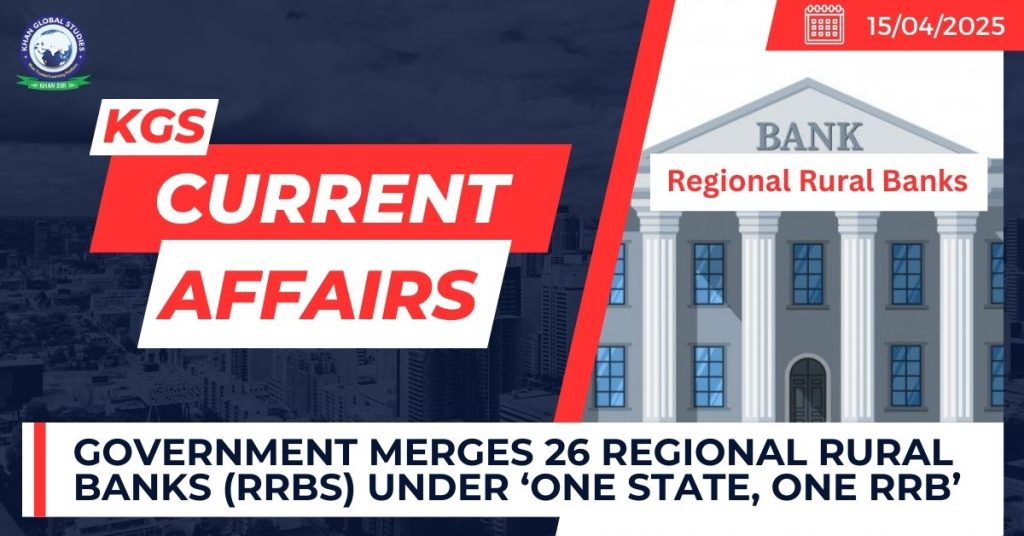Context:
The Department of Financial Services (DFS) has announced the amalgamation of 26 Regional Rural Banks (RRBs) across 10 states and 1 Union Territory, under the “One State, One RRB” Initiative.
More on the News
- This comes as part of the fourth phase of the RRB consolidation initiative, which will take effect from May 1 following government approval.
- This move aims to enhance operational efficiency and reduce costs, thereby reducing the total number of RRBs to 28 from the current 43.
- The affected regions include 11 states: Andhra Pradesh, Uttar Pradesh, West Bengal, Bihar, Gujarat, Jammu & Kashmir, Karnataka, Madhya Pradesh, Maharashtra, Odisha, and Rajasthan.
- In each of these states, the existing RRBs will be merged into a single entity in line with the government’s “One State-One RRBs” initiative.
- The consolidation is being carried out under Section 23A (1) of the Regional Rural Banks Act, 1976, in the public interest, for the development of the regions served and also to strengthen the RRBs themselves.
- Each newly merged entity will have an authorized capital of ₹2,000 crore and will operate under the sponsorship of a major public sector bank.
About the Regional Rural Banks (RRBs)
- RRBs were established under the Regional Rural Banks Act, 1976, with the core objective of providing credit and banking services to small farmers, agricultural laborers, and rural artisans.
- The Act was amended in 2015 to allow RRBs to raise capital from sources beyond the Central Government, State Governments, and sponsor banks.
Shareholding structure:
- The Central Government holds a 50% stake
- Sponsor banks hold 35%
- State governments hold 15%
- Despite the provision for capital infusion from other sources, the combined shareholding of the Centre and sponsor public sector banks must not fall below 51%, as per the amendment.
Operational Footprints of RRBs:
- Currently, 43 RRBs operate across 26 states and 2 Union Territories, having more than 22,000 branches, serving around 700 districts nationwide.
- Approximately 92% of these branches are located in rural and semi-urban areas, reinforcing RRBs’ core role in serving India’s rural economy.
Phases of RRB Amalgamation:
- Phase I (FY 2006–2010): Number of RRBs reduced from 196 to 82
- Phase II (FY 2013–2015): Reduced further from 82 to 56
- Phase III (FY 2019–2021): Consolidated from 56 to 43
- Phase IV (2025): Now reduced from 43 to 28

